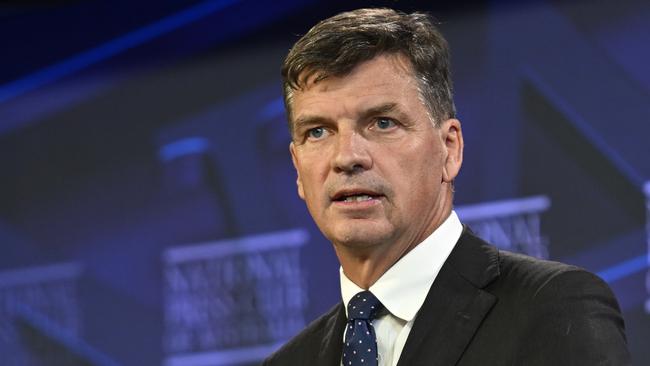Election 2025: $250bn GDP forgone on weaker growth
Tax revenues would be $50bn higher each year and annual GDP more than $250bn larger if Labor had met its assumed productivity rate of 1.2 per cent a year, the Coalition has claimed.

Federal government tax revenues would be $50bn higher each year and Australia’s annual GDP more than $250bn larger if Labor had met its assumed productivity rate of 1.2 per cent a year, the Coalition has claimed, promising its own higher target will deliver $275bn higher economic growth than Labor’s if elected.
Labor adopted a lower long-term productivity growth assumption of 1.2 per cent in its 2022 federal budget, reflecting structurally weaker productivity growth across time.
Productivity has been dismal on a trend basis, resulting in the nation’s annual GDP being $250bn lower than what it would have been if it had met 1.2 per cent productivity growth. Measured as GDP per hour worked, the 10-year average annualised growth is just 0.2 per cent – the weakest in at least 35 years.
The Coalition has promised a new target of 1.5 per cent, which on its estimates would mean about $25bn in annual economic growth over and above the 1.2 per cent growth rate. That also would boost federal government revenue by another $6bn a year.
Opposition Treasury spokesman Angus Taylor has promised the 1.5 per cent target, saying he is committed to “pursuing a rigorous productivity and investment enhancing reform agenda” if elected. “Productivity fuels our economic potential, yet under the Albanese Labor government it has collapsed,” he said.
A spokesman for Jim Chalmers said the government had “a big agenda to boost productivity but we recognise that it will take more than one term to turn it around”.
“The decade to 2020 under the Coalition was the worst for productivity growth in 60 years,” Dr Chalmers’ spokesman said. “Our productivity agenda includes revitalising national competition policy including our $900m National Productivity Fund, streamlining and strengthening our merger and foreign investment regimes, investing in the NBN and delivering record funding for skills and education.”
Most economists, including those at the Reserve Bank, blame the government sector for the weak growth. RBA head of economic analysis Mick Plumb noted in February that the “level of measured productivity in some parts of the non-market sector is low relative to the aggregate economy”.
Some economists such as Deutsche Bank’s Phil O’Donaghoe said productivity might suddenly turn around in Australia regardless of who took office.
Mr O’Donaghoe said while government sector productivity was very low, it only partly explained the decline in Australia’s overall productivity.
“Australia’s Covid-era employment protection scheme – JobKeeper – has also played an overlooked and underappreciated role,” Mr O’Donaghoe said.
“To the extent that productivity is lagging because JobKeeper has reshaped Australia’s post-Covid labour market, we would expect the pre-Covid relationship between productivity and commodity prices to reassert itself over 2025.”
He said JobKeeper meant a large number of workers remained “employed” during this period but contributed little – that is, output per worker was much weaker. “As disruptions from Covid continue to fade, we expect the pre-Covid relationship to reassert itself over 2025.”
Part of the government sector productivity slide might be attributable to the difficulty in measuring the output of workers in areas such as the National Disability Insurance Agency, Mr O’Donaghoe said. “Productivity is always easier to measure in a manufacturing economy than it is in an economy (with) a lot of non-market based jobs such as the NDIS.”
Economist such as EY chief economist Cherelle Murphy said despite the strong levels of government investment, productivity in the government sector had fallen. “Non-market labour productivity is down by 0.3 per cent since December 2019, compared to productivity growth of 4 per cent in the private sector,” Ms Murphy said.




To join the conversation, please log in. Don't have an account? Register
Join the conversation, you are commenting as Logout